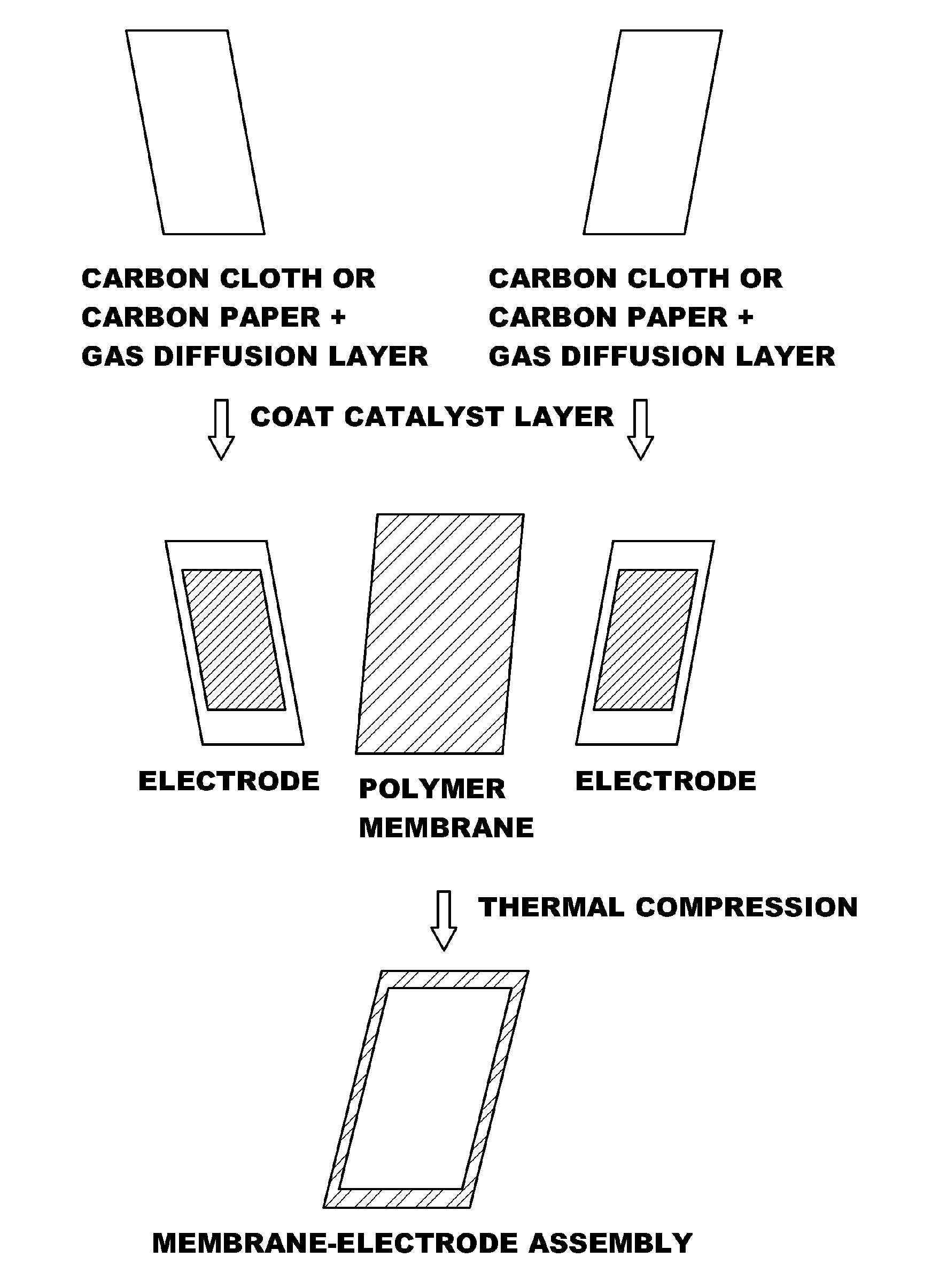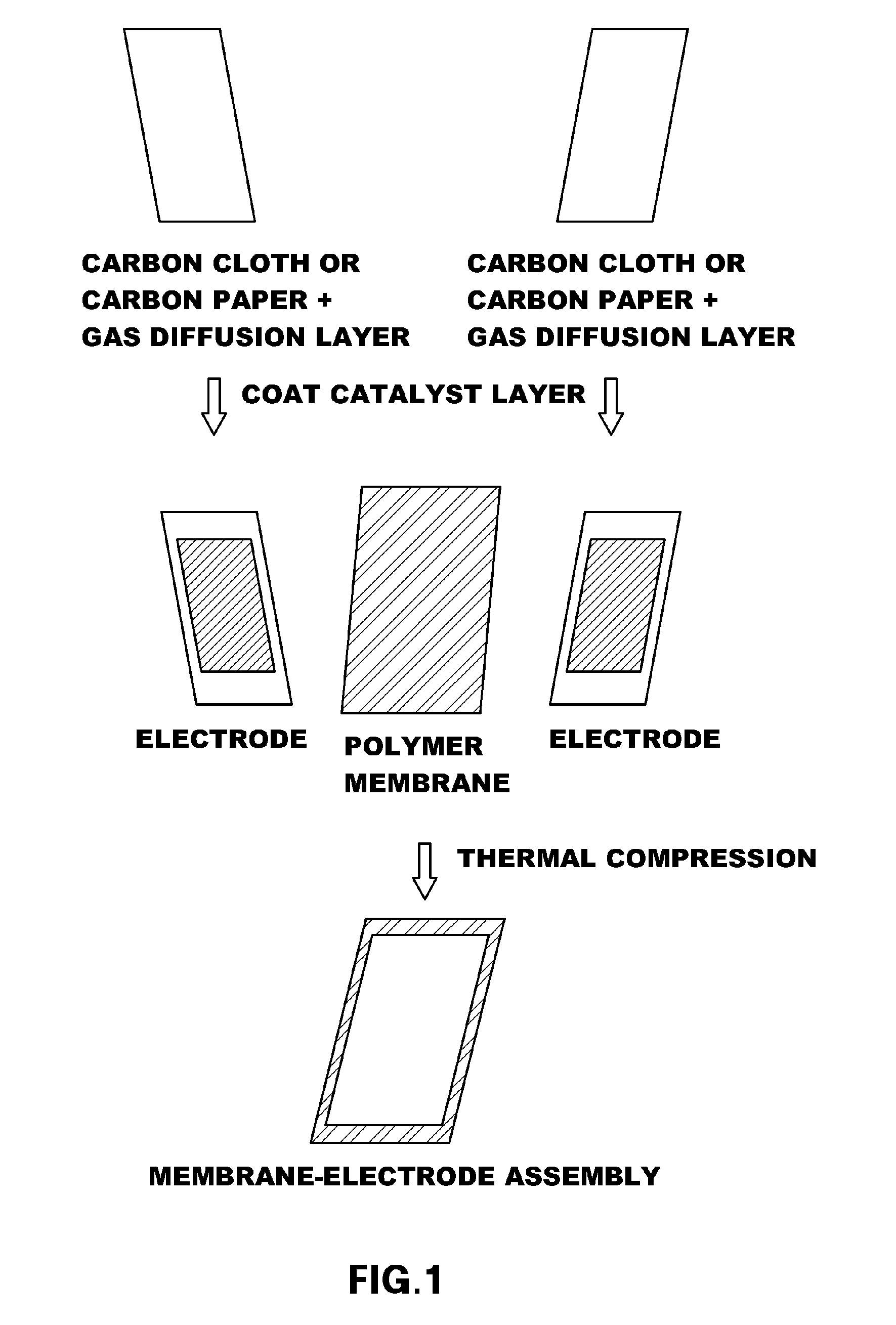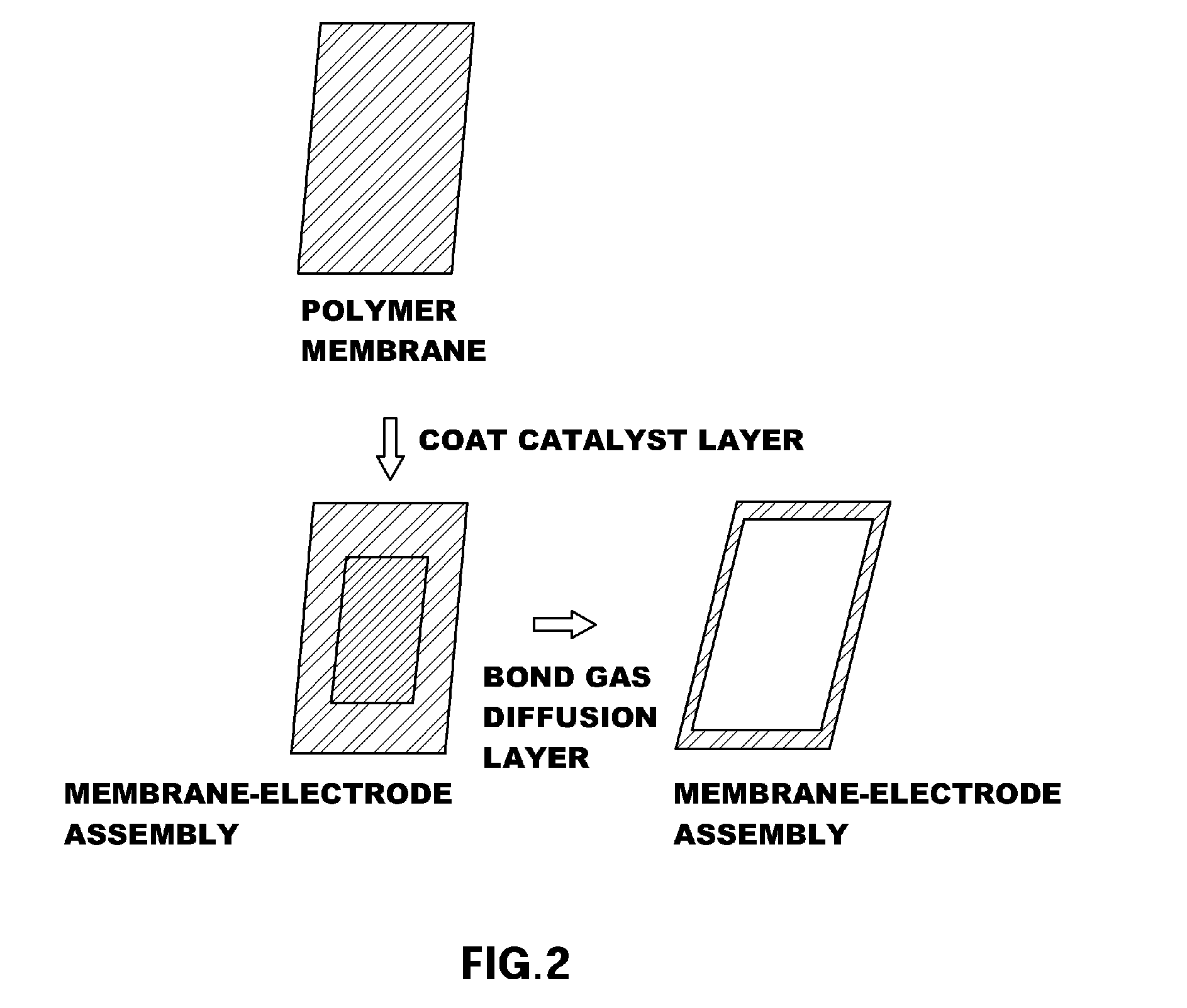Electrode for polymer electrolyte membrane fuel cell and method for forming membrane-electrode assembly using the same
a polymer electrolyte membrane and fuel cell technology, applied in the direction of cell components, organic compounds/hydrides/coordination complexes, physical/chemical process catalysts, etc., can solve the problems of difficult to form large-area electrodes, difficult to form membrane-electrode assemblies, and inconvenient mass production of membrane-electrode assemblies, etc., to increase the mechanical strength of the catalyst layer, increase the performance and durability of the fuel cell membrane-electrode assembly
- Summary
- Abstract
- Description
- Claims
- Application Information
AI Technical Summary
Benefits of technology
Problems solved by technology
Method used
Image
Examples
examples 1 to 3
[0093]In a first exemplary embodiment, catalyst slurry was prepared by mixing 4 parts by weight of carbon nanotubes as one of the carbon nanofibers with respect to 100 parts by weight of the catalyst with a solvent in Example 1 (6 parts by weight of the carbon nanotubes were used in Example 2 and 8 parts by weight of the carbon nanotubes were used in Example 3), and adding 10 parts by weight of cerium-zirconium oxide as the radical inhibitor to the mixture. The prepared catalyst slurry was suitably coated on a release paper and dried, and the dried electrode was thermally compressed on a polymer membrane, thus forming a membrane-electrode assembly according to each example.
PUM
| Property | Measurement | Unit |
|---|---|---|
| diameter | aaaaa | aaaaa |
| particle size | aaaaa | aaaaa |
| wt % | aaaaa | aaaaa |
Abstract
Description
Claims
Application Information
 Login to View More
Login to View More - R&D
- Intellectual Property
- Life Sciences
- Materials
- Tech Scout
- Unparalleled Data Quality
- Higher Quality Content
- 60% Fewer Hallucinations
Browse by: Latest US Patents, China's latest patents, Technical Efficacy Thesaurus, Application Domain, Technology Topic, Popular Technical Reports.
© 2025 PatSnap. All rights reserved.Legal|Privacy policy|Modern Slavery Act Transparency Statement|Sitemap|About US| Contact US: help@patsnap.com



